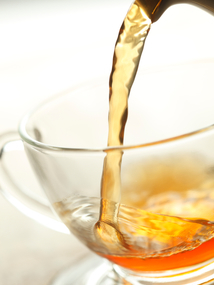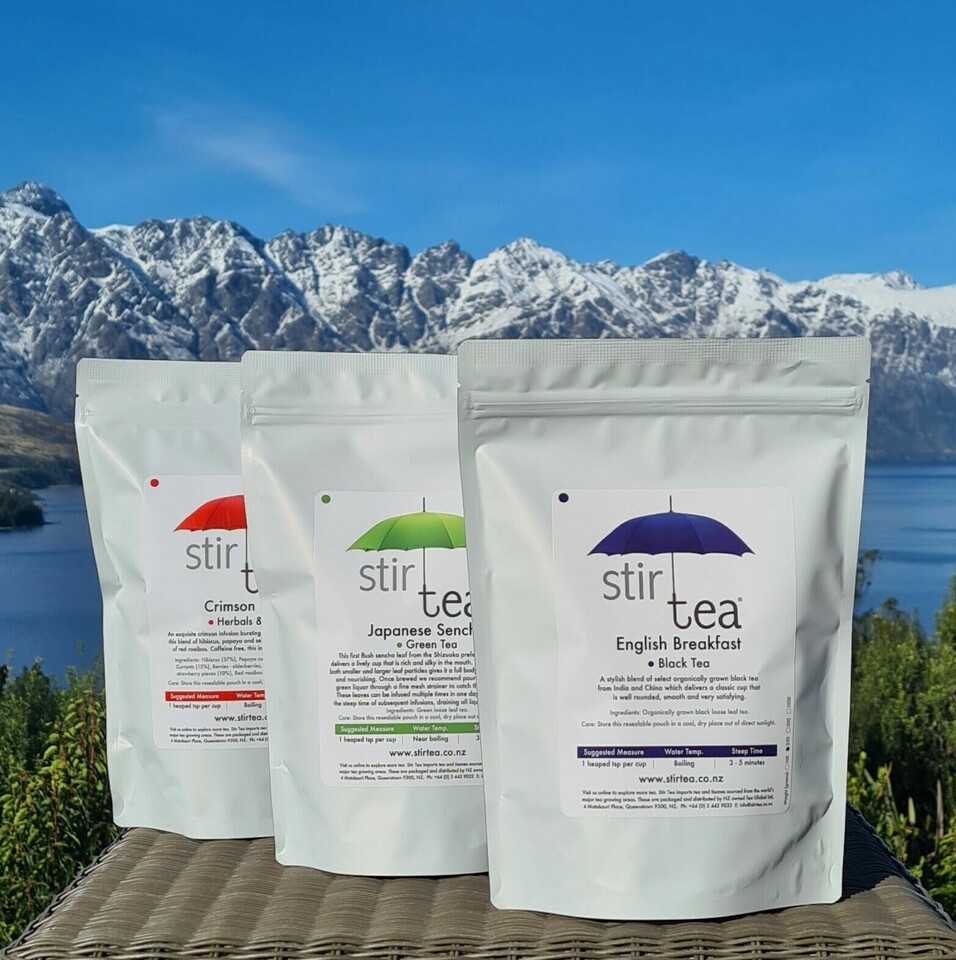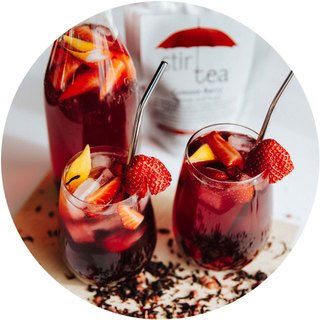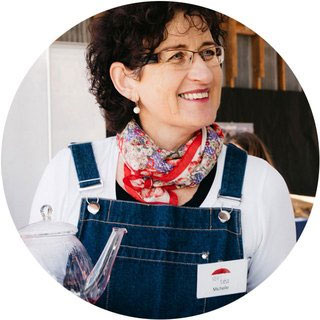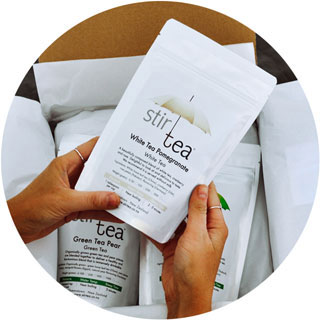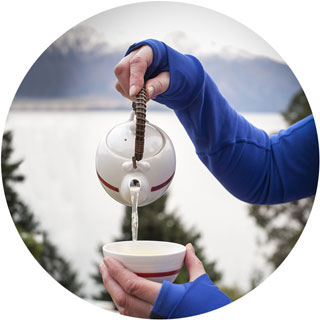Introduction from Michelle at Stir Tea:
The below article was written by US based author Peter Keen whose style and expertise we greatly admire. We are very grateful for Peter’s kind written permission for us to share it with you.
Read more about Peter’s extensive academic and tea qualifications in our article about Peter Keen - Tea Lover and Author.
He regularly shares his tea thoughts and fascinating articles on his Facebook page at https://www.facebook.com/teatipspk.
Because Peter is based in the US you will find some references, measures, terms and comments used in the following article are different to those used in NZ. We have included some temperature conversion tools in the article and invite you to settle in with a cuppa and hope that you enjoy this informative and interesting read.
********************************************************************************************************************************
It’s All About the Water: Making the Perfect Cup of Tea
When bad things happen to good teas, it’s generally the water that’s the problem. Yes – the water!
When brewing tea, many of us don’t give much thought to (1) what type of water to use, (2) how hot it should be, and (3) how long to steep tea before serving it. Truth is, these 3 factors have a substantial impact on the taste, aroma, and flavours of tea. And the ideal times and temperatures vary depending on whether you’re brewing black teas, green teas or other varieties.
Your choices here can make the difference between your brewed green tea being a smooth and fresh pleasure of flavours…. or it can taste like an industrial-strength floor cleaner. Is your black tea sometimes brisk, full and aromatic and other times have shoe leather overtones? It’s likely the water that’s to blame.
Why the water matters
Water doesn’t just “heat” the tea.
Let’s say that again: water is NOT simply how you get tea to be hot.
Instead, think of hot water like a switch you flip that controls the entire chemistry of the leaf: thousands of different molecular compounds, polyphenols, enzymes, amino acids and minerals.
For example, a brief and low-heat brewing of Japanese Sencha green will tease out the catechins and amino acids that create its subtle vegetal and savoury umami flavour.
Try that cool-and-quick brewing method with an Assam black tea and you’ll basically get flavoured dishwater in your teacup.
Instead, that black tea needs nearly boiling water and a few minutes of extra brewing time. This is what unlocks the tannins and theaflavin and thearubigin compounds that create black tea’s malty fullness.
Now, go back and blast-brew the sencha with that Assam treatment. Your taste buds will long recall the nuclear bomb assault of bitterness. Same leaf, different water handling.
How to get the perfect brew
Here’s our guide to making sure your water brings out the best in your type of tea. Give it a try and it might just change your tea-drinking experience. It’s so easy to take water for granted!
Here are the most important factors:
What’s in your water?
There are three main measures of water suitability as an enabling base for tea: (1) hardness, (2) acidity/alkalinity and (3) dissolved solids.
The factor that has the most impact for a tea drinker is hardness.
1. Not too hard, not too soft
Hard water carries a high load of calcium and magnesium. If your tea tastes bland and low in flavour, hardness is suspect #1.
You can easily identify hard water by pouring half a glass of it. If you detect any hint of cloudiness, don’t waste a good tea on it. Other tell-tale signs of hardness are when your water leaves a light film across the surface and won’t lather well with soap.
So, avoid hard water but don’t go to the other extreme of “pure” water that is too soft. For example, distilled water has all the minerals removed, but you need those minerals for tea’s flavour. Oddly enough, soft water tends to make the tea taste more salty.
How to get the Goldilocks-perfect fresh water? Err on the soft side of the divide. Don’t put up with hard water. Make sure it’s filtered, either by yourself or in bottles of mineral-carrying spring water.
2. Acid vs. alkaline
Drinking highly alkaline water has been increasingly popular, but how does it affect your tea?
Pure water has a pH level of 7. (Fun fact: pH stands for Power of Hydrogen.) Below 7 means your water is acidic, while above 7 indicates alkalinity.
The ideal range for tea is water in between 6.5-8.5 pH. Get too far below a pH of 7, the acidity will produce a lighter brew. Too far above 7 and the alkaline water will make for a darker tea.
3. Total dissolved solids
TDS (totally dissolved solids) are organic solids. If the TDS level of your water is too low, that means it lacks compounds that aid in health.
A TDS level that’s too high can potentially include chemicals, heavy metals (mainly from car exhaust!), and industrial waste. Not exactly something you want in your cup of tea!
How to get the right water
You probably don’t want to measure the hardness, pH and TDS levels of your water on a regular basis. Not to worry, just keep the guidelines in mind as you evaluate the range of water choices available:
Bottled spring water: When it’s certified as coming directly from a mountain spring, you’d be hard-pressed to find higher quality water. This water has naturally absorbed minerals with no other solids, resulting in ideal pH and hardness. Very much the connoisseur’s pick. But expensive, criticized as environmentally damaging, and too often not exactly from the source claimed on the label.
Carbon filtered water: Probably the most popular choice for frequent specialty tea drinkers. Charcoal works well in filtering out undesirable and unhealthy solids while maintaining minerals and salts. Used in pitchers or as an attachment to a faucet.
Faucet water: Generally, a good enough compromise choice for occasional tea making and for teabags. In most localities, faucet water has an acceptable balance between acidity, dissolved solids and removal of bacteria, contaminants and plastic molecules. The variations in hardness are very wide, though, largely due to origination in rocky terrain versus rain feeding the reservoirs. There are huge swaths of the US where the water is way too soft or hard or too full of contaminants to consider for tea brewing (most of LA and Minneapolis, for instance).
Add in issues of chemicals, rust from old pipes, chemicals leaking from the soil and seasonal changes in utilities and all in all the faucet is not the ideal option. Most cities publish their water quality evaluations so you can check your own community’s online.
Note from Michelle at Stir: Your local council will be able to tell you what the PH of your tap water is (here is Queenstown it is 7.6).
Bottled pure drinking water: Varies greatly in quality and truth in labelling; some products are just tap water. Many environmental concerns accompany bottled water, which offers no compelling reason for tea drinkers to adopt it.
Reverse osmosis: A purification technology that forces water through a membrane to remove molecules, ions and solids from even waste water. Relatively expensive for home investment ($300 on up). The preferred system for many fine tea stores. (It may explain why that tea you bought from a specialty tea store was so terrific when you sampled it on site but it remains disappointing when you brew it at home. The shop used perhaps a reverse osmosis purification system that costs $300 or more.)
Overall, the most cost-effective choice for tea lovers is faucet water poured through a carbon filter pitcher with a first-rate bottled mountain spring water kept for those really special teas.
Getting the right temperature and brewing time for your tea
Time to boil water!
Making a good cup of tea means balancing the combination of temperature and time that best facilitates the dynamic and complex chemistry of the leaf. This is the single main determinant of how your tea will taste.
Please note: it won’t improve a mediocre tea bag blend of machine-processed broken leaf, but it absolutely can enhance or spoil a mid-range loose leaf tea or other premium teas.
Here is a simple summary table of brewing rules for different tea types. Most people don’t have access to a portable thermometer, so we have included guidelines on how to get water to the approximately required temperature.
|
Type |
Temp (˚F) |
Time (mins) |
No thermometer |
|
Black Tea |
205-212 |
3-5 |
Boil, wait a few seconds |
|
Green Tea |
170-185 |
1.5-3 |
Boil, cool 3 minutes |
|
Oolong Tea |
195 |
3-4 |
Boil, cool 2 minutes |
|
White Tea |
175 |
3-4 |
Boil, cool 3 minutes |
These rules are taken from the many consensual published recommendations of many experts. They are based on science and the fact that darker teas are oxidized to varying degrees while lighter teas are only minimally or not at all oxidized.
Note from Michelle at Stir: Converting fahrenheit to celcius. A general rule is simply to take 30 off the Fahrenheit value and then halve that number. For an exact conversion then you might find this site useful: https://www.metric-conversions.org/temperature/fahrenheit-to-celsius.htm
Variations in water temperature
You can certainly adjust these guidelines to meet your personal preferences – but only within very narrow ranges.
The general rule for black teas for example, is boiling water at 212°F. Using 205° is fine in most instances, but at 200° you’ll sense a slight loss of zip.
Don’t play around with green teas. They are carefully cultivated and nurtured to release their flavour at 170-185°. They are also artfully tailored to punish those who trespass outside the heat limits.
Japanese greens are the most finicky here; a good fukamushi (deep-steamed) sencha should be made at 150°/1.5 minutes versus 160°/1.5 for a light-steamed asamushi. At 170°/2.5 minutes both these teas are transformed from exquisite to truly execrable.
How to adjust teas that are too strong or too weak
In general, a useful rule is that when you are not satisfied with a tea, do NOT increase the amount of time for steeping.
If it is too weak, adjust the amount of tea (add more tea leaves in your next brewing). For harsh, over-strong teas, cut back on amount, time and/or hotness. With tea, less is generally better.
What about iced tea?
In general, the rules are the same as for hot tea. Brew your tea as described above – just use 1-2oz of hot water. Once you have your brewed tea, you can add cold water or ice as desired!
Final Thoughts
Look after the water and your tea will look after itself.
We hope you now have a better understanding of how your water can impact your drinking experience of various types of tea. Yes, different teas require different steeping time, but the science of water goes beyond that.
One final point, about microwaving your tea. Don’t even think about it. Microwaving doesn’t “boil` water. It leaves some areas cold and others hotter than the 212º boiling point. Or not. It creates some very complicated reactions that include superheating (turns your cup into a steam grenade), loss of oxygen (blands the tea down to insipid) and accentuation of the taste of impurities from the water and even the cup material.
So, avoid your microwave, embrace your teapot and go forth and enjoy the perfect cup of tea!
Author: Peter Keen, MBA, DBA, Ph.d (hon), D.Sc (hon)
Michelle here from Stir, once again a big thanks to Peter for allowing us to share his insights.
Peter’s extensive academic and tea qualifications can be viewed in our recent article Peter Keen - Tea Lover and Author
Posted: Thursday 26 August 2021
